Career of the landscape architect Alejandro Cabeza Perez
Learn about the biggest challenge that the population is facing in relation to the environment and learn some actions that we can implement to conserve and care for it.
Architect by the National School of Architecture of the National Autonomous University of Mexico, he obtained the Gabino Barreda medal. Master in Landscape Design from the Department of Landscape Architecture at the University of Sheffield, England.
With doctoral studies in architectural design at the Center for Research and Postgraduate Studies of the FA, UNAM. He has been a professor of the Bachelor of Landscape Architecture since 1985.
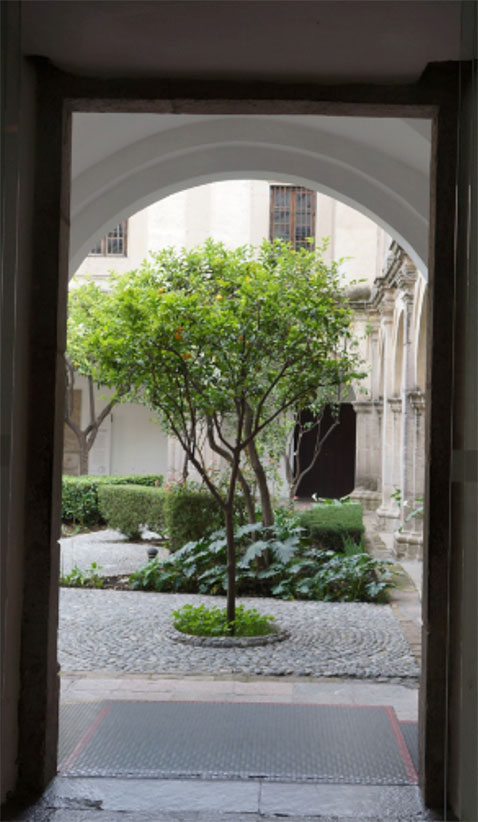
Patio de los naranjos
Photography: Despacho Cabeza Arquitecto Paisajista y Asociados, S.C.
How did you discover that landscape architecture was your profession?
It was through an ecology field trip, organized by an academic group from the UNAM Institute of Biology, where I was invited by one of the members and a friend of mine, PhD in Sciences, Carlos Vázquez Yañez (now deceased) to the Los Tuxtlas Biological Station of the UNAM in Veracruz. At that time I had just graduated from the Faculty of Architecture (1979).
Inside the biological station I began to hear a new academic-scientific language related to the ecosystem of the reserve: the High Evergreen Forest, which meant for me a partial discovery of the natural world and its design principles, as I could translate it with my educational background in architecture.
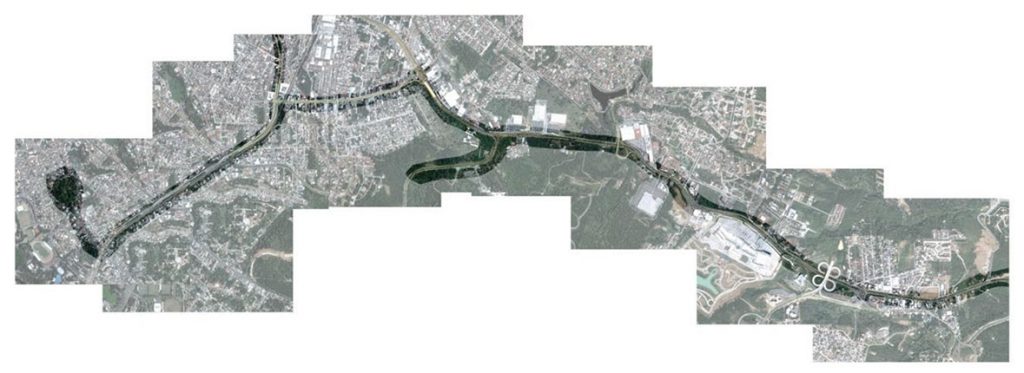
Urban reforestation of the roads, parks and gardens of Xalapa
Photography: Despacho Cabeza Arquitecto Paisajista y Asociados, S.C.
A camera, the only instrument I carried, allowed me to focus attention and develop a sense of observation on aspects related to natural processes that give rise to the presence of an ecosystem.
Inside the jungle I began to receive lessons in statics, composition, harmony, symbiosis, perception of shapes, textures, colors, reinforced by the scientific knowledge of the researchers and teachers of the group. A fusion between architectural and scientific language.
On the other hand, I could be aware of the progressive disappearance of natural reserves in the face of the social and economic problems of the country in favor of the supposed progress; with the result of continuing to attack an inherited nature that every day decreases alarmingly.
At the same time, I had received the offer of a CONACyT scholarship-credit for studies abroad that made me think about taking advantage of it for master’s studies in a discipline that could merge a scientific biological approach with another related to architectural design. The answer was Landscape Architecture.
What has been the biggest challenge in your professional career?
My professional career manifests itself in two expressions: project and work as a beginning and academic experience that begins with the creation of a degree in Landscape Architecture at UNAM.
The biggest challenge in the first one was working for the Governor of Veracruz, Mr. Acosta Lagunes, when I barely had a year of professional experience, who entrusted me with the green areas of the City of Xalapa, with the support of the municipal administration where I proposed the opening of a new nominated Directorate of Environmental Improvement with three programs: Environmental Sanitation, Urban Reforestation and Ornamentation of public spaces (83-84); with a secretary and 50 gardeners from the municipality. A whole learning experience!
The biggest challenge in the second is to have given the first landscape class at the opening of the degree on November 4, 1985, without previous experience; Now I think of it as an emotional audacity without preparation
that is only compensated by the immense satisfaction of seeing such a relevant academic project materialize, with the hope of training future generations of graduates in landscape architecture, who will position the discipline at the height of any other.
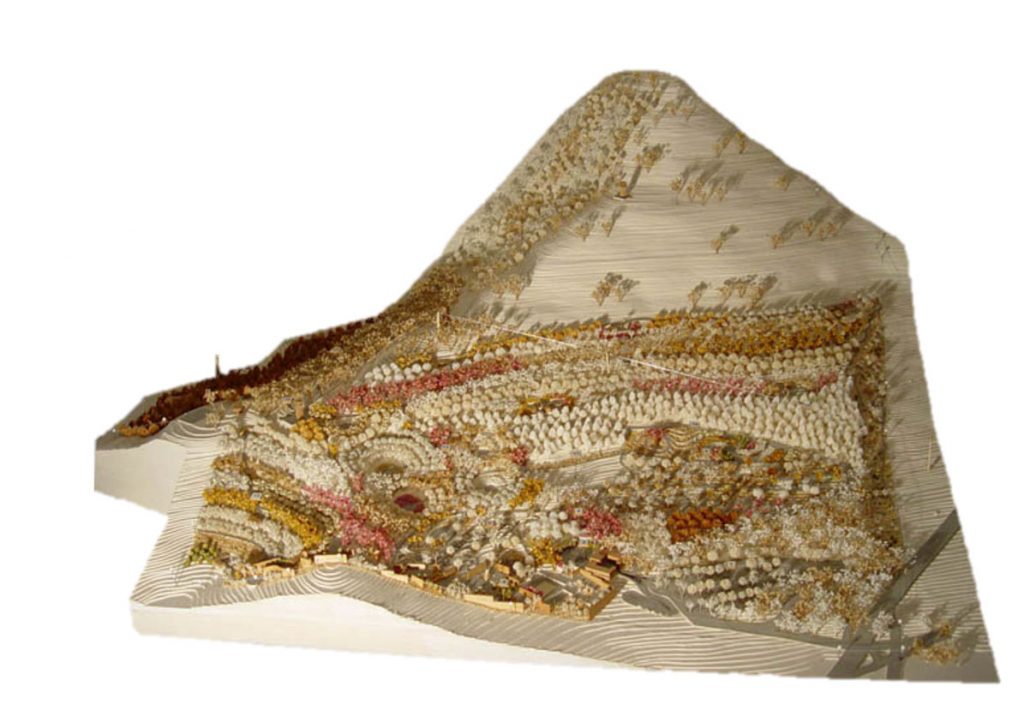
El Punguato Botanical Garden, Morelia, Michoacán, 2005. Landscape Master Plan in collaboration with Rocío López de Juambelz
Model:Photography: Despacho Cabeza Arquitecto Paisajista y Asociados, S.C.
What advice would you give to young landscape architects?
The first tip is a constant knowledge update in various fields of knowledge of interest; engineering, humanities, science, arts, technology among others, and at different levels of study such as postgraduate or continuing education; part of the update of preference abroad or in different educational institutions. Ideally, it is after having a professional practice period of 1 to 3 years.
The second, to change the field of professional experience with some frequency to have a more precise idea about the type and scale of work in which they are best developed.
The profession offers a diversity of specializations that have not yet been developed in our country, so it is advisable to achieve the acquisition of a specialization that ensures the management of deep knowledge on a subject.
Finally, try as much as possible to work within interdisciplinary groups throughout the landscape design process in the execution of projects.
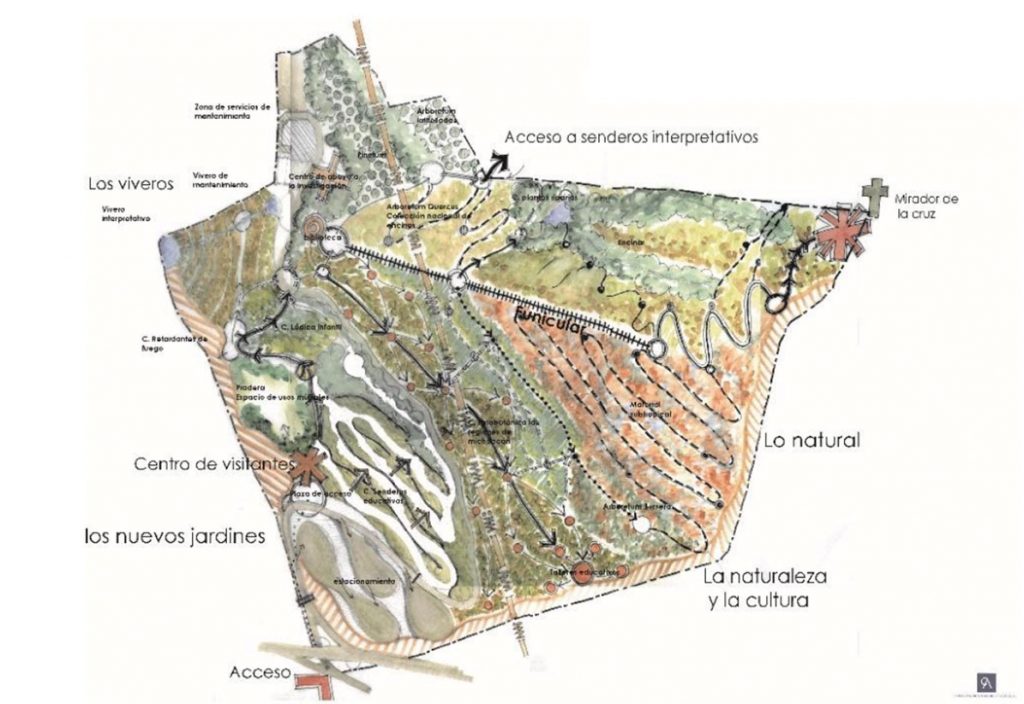
JB Punhuato Preliminary design incollaboration with Rocío López de Juambelz
Ilustration: Model:Photography: Despacho Cabeza Arquitecto Paisajista y Asociados, S.C.
What actions can we implement in our homes to promote conservation, care and respect for nature for future generations?
In the first place, a change in attitude and acquisition of awareness about the place we live in, that is, having knowledge of the natural and cultural past and present of the housing site: What landscape do we inhabit? What is its past, present and how can we foresee its future? Can we recover some of the elements that have transformed it, such as soil, water, vegetation, rocks, among others?
How we will begin to adapt from our home to the onslaught of global warming, starting with saving resources in the use of water and other supplies through changing consumption habits, for example.
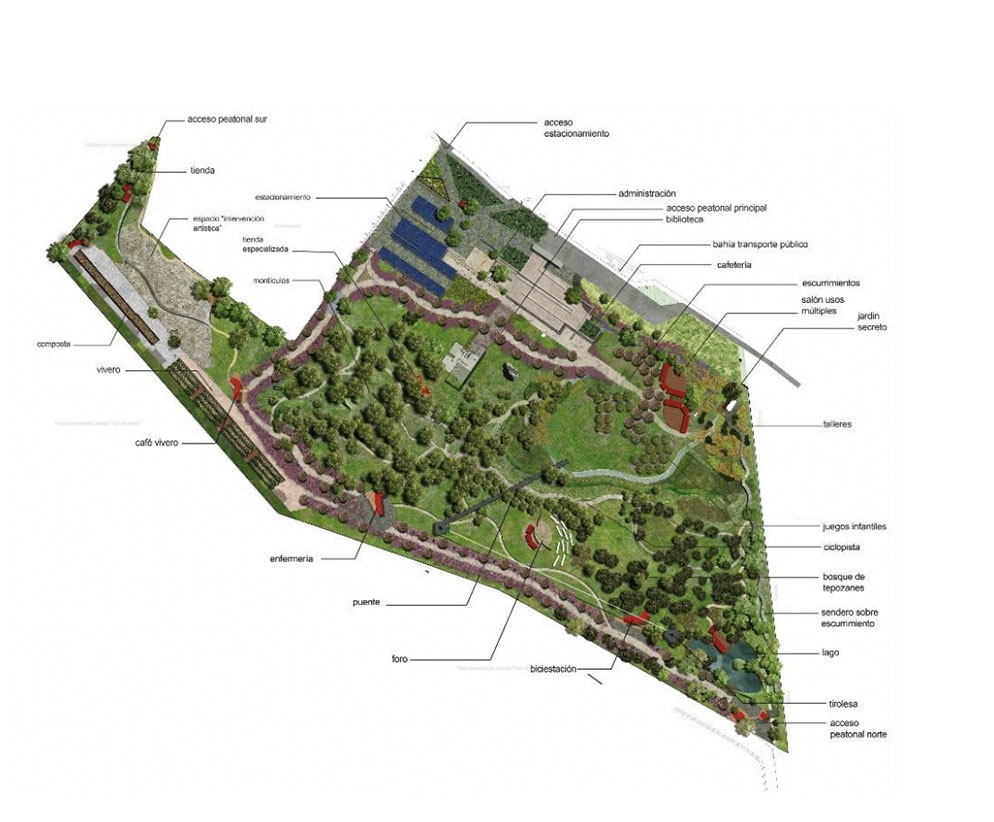
Master plan and zoning of San Antonio Urban Biopark, Mexico City, 2011
Illustration: Despacho Cabeza Arquitecto Paisajista y Asociados, S.C
Currently, what is the biggest challenge hat the population is facing in relation to the environment?
Changes related to global warming such as floods and other risks related to climate change. The most vulnerable populations being those that have established irregularly in natural sites not suitable for habitation, such as ravines or other places that present soil instability with the danger of landslides and landslides.
On the other hand, urban areas have displaced rural populations. The countryside in general is neglected, so rural development has to be addressed for the benefit of the urban; It is not just about invading the countryside or urbanizing it without taking its values and attributes into consideration.
In rural areas, there are heritage landscapes that must be respected and preserved in the face of an attitude of destruction of the rural legacy. In this, landscape architecture has a commitment to fulfill, as in historical urban landscapes, seeking a balance of a biocultural and social type, in addition to the environmental.
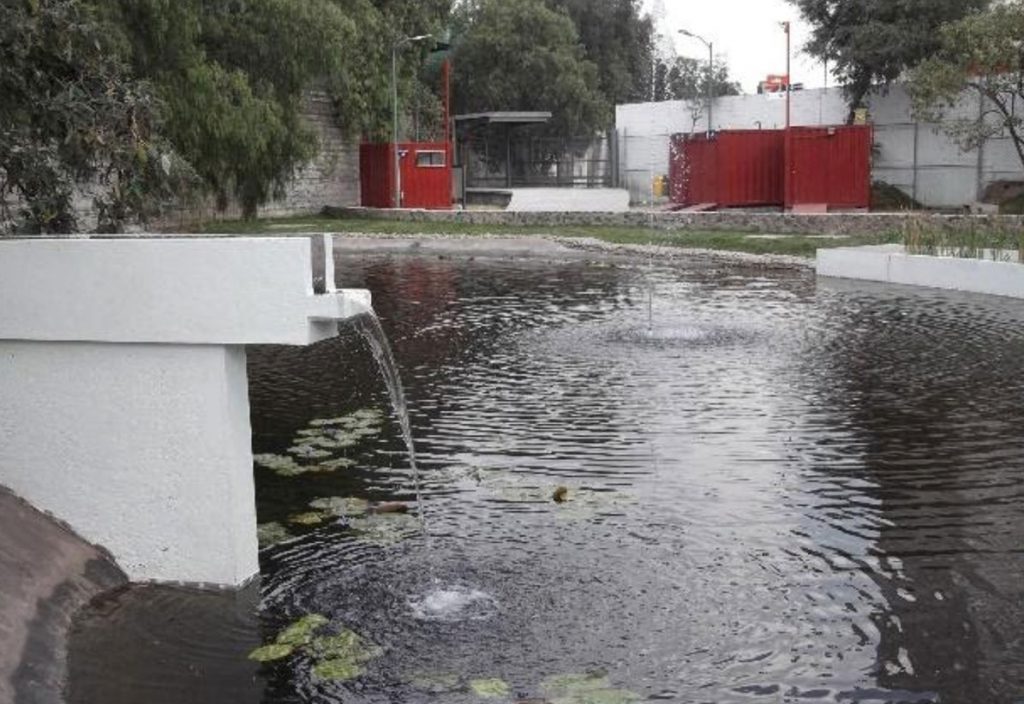
Panoramic view of San Antonio Urban Biopark, Mexico City
Photography: Despacho Cabeza Arquitecto Paisajista y Asociados, S.C.








